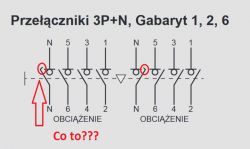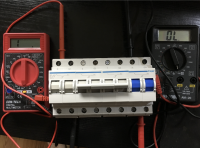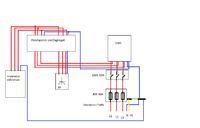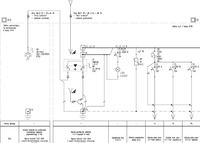MartinezVip wrote:
And is it possible that a person typing on a keyboard can make a mistake and the crowd can repeat it unconsciously?
Designation: 3P+N - principle of operation:
link So how is it with this 3P+N at all?

Do you have this in Spamel's switch diagram?
In the will of accuracy - on the diagram
I GUESS there is an error with a given HIM406 switch model. At the stage of creating the schematic, calling Hager's technical support, the advisor presented this solution as 3P+N - that it was supposedly a mistake in the marking and that's how it went. 3P+N or 4P - theoretically, the difference is not visible when looking at the housing.
I will not physically buy this apparatus and I will not check out of curiosity whether the track connects/disconnects first/last or evenly with the phase ones.
emigrant wrote: I will return to the subject of the aggregate a little, but not completely. Hager SF463 power switch arrived today. In another topic (https://www.elektroda.pl/rtvforum/topic3350913-60.html) the topic of this switch was discussed, specifically whether the N pole has a time delay or not. Since there were any objections to this, I simply wrote to the Hager company, whether it is a 3P+N switch, where the N pole has a time delay, or a 4P one. I contacted twice and each time got the answer that it is a 4P switch, all poles turn on and off simultaneously. Even people from Hager Polska contacted some engineers, etc. Blah blah...
I checked in a rather simple and even crude way whether the N pole has a delay. It took 2 multimeters and you can see when the contacts are connected. In addition, by switching up or down we have such a double-click. There are like 2 stages of switching and you can feel it at hand. The N pole is activated first, followed by the phase poles. This gap is quite large, suggesting only "wajcha". Some ~10 mm still need to cover the arc paths to connect the phase contacts.
It's strange that the manufacturer himself misleads the customer. They do not have exact knowledge of their product. Even the blue marking of the N pole suggests that it is or could be 3P+N and not 4P.

Now the question is, was this adviser telling the truth or lying? Was he a good and underrated technician or was he from a round-up? Does he still work at Hager?
I will not answer.
PS Not everything that is written in the catalog cards is true. There are often mistakes because the order went to print and the cost of not completing it is much higher than the value of the order. Also, is there a bug in this case ... I still don't know.
Do not look at what manufacturers write, but at general technical knowledge and accepted principles. When you find a babola, pick up the phone and call the manufacturer with a question.
I do not know spamel's offer for power switches because I do not sit on these topics anymore, but at the time 3P + N was with this red circle, which, according to. theory had its justification when switching on and off the N track.









